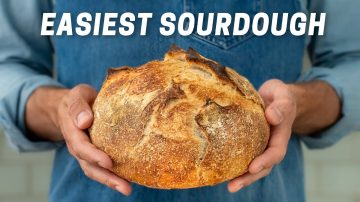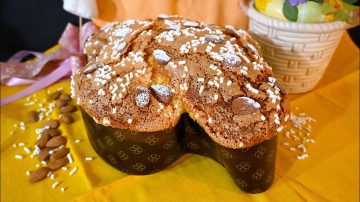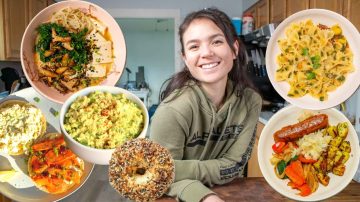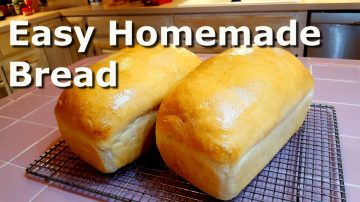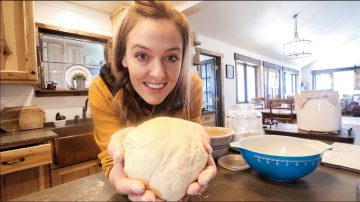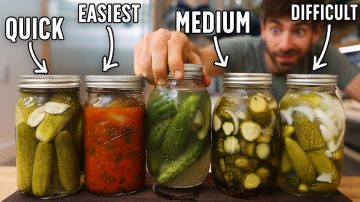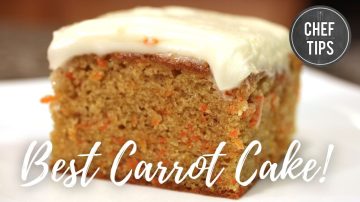Cozy Fall Meals in Our New Home (+ My Sourdough Recipe)
Recipe Overview
Overview
As the weather cools down, there’s nothing quite like the warmth of freshly baked sourdough bread. This recipe is perfect for those who might feel intimidated by sourdough, as it breaks down the process into manageable steps. The key is ensuring your sourdough starter is bubbly and active, which sets the foundation for a successful loaf.
The method involves mixing the starter with lukewarm water, bread flour, and salt, resulting in a shaggy dough that transforms through a series of stretch and folds. This technique not only develops gluten but also builds strength in the dough, making it smooth and elastic over time. The process is straightforward and requires minimal effort, making it accessible for beginners.
After allowing the dough to rise, shaping it becomes an art form in itself. Even if your shaping isn’t perfect, the bread will still taste amazing. The final step involves baking the loaf in a preheated Dutch oven, which helps achieve that coveted crispy crust. Remember to let the bread cool before slicing to avoid a gummy texture.
This sourdough bread pairs beautifully with cozy soups or can be enjoyed as a base for grilled cheese sandwiches. It’s a delightful addition to any fall meal, and once you master this recipe, you’ll find yourself baking it regularly throughout the season.
Recipe Details
Steps & Tips
Whisk together bubbly sourdough starter with lukewarm water, then add bread flour and salt.
Let the dough rest for 20 minutes, then stretch and fold the dough every 20 minutes for 2 hours.
Tip: Make sure your sourdough starter is very bubbly and active for best results.
Cover the dough and let it rise until roughly doubled in volume.
Tip: Go by how the dough looks rather than strict timing for rising.
Perform another set of stretch and folds, then turn the dough onto a floured surface and let it relax.
Shape the dough to create tension on the surface.
Tip: Even imperfect bread usually still tastes amazing.
Tip: If you don't have a banneton, use a colander or mixing bowl lined with cloth.
Let the shaped dough rise in the fridge overnight.
Tip: Let the bread cool completely to avoid a gummy texture.
Preheat your Dutch oven in a 500° oven for about an hour.
Score the dough with a sharp knife before baking.
Bake the bread covered for the first 15 minutes, then uncover for the remainder.
Mix pumpkin puree with dry ingredients and prepare streusel topping.
Tip: Make your own pumpkin spice blend to tailor it to your preferences.
Bake muffins at 425°F for 5 minutes, then reduce to 375°F for the remaining time.
Tip: Drizzle glaze on muffins after they are fully cooled for the best texture.
Scoop out seeds, brush cut side with oil, and roast until tender.
Tip: The butternut squash cream sauce pairs well with any pasta shape.
Slice and pan fry Beyond sausages, then sauté shallots and garlic.
Tip: Using a food processor to chop kale can help tenderize it and reduce bitterness.
Mix sautéed ingredients with butternut squash puree and vegetable broth.
Tip: Toast nuts and seeds to add crunch to your salad.
Wilt fresh spinach into the noodle dish.
Chop kale and cabbage in a food processor.
Whisk together lemon juice, apple cider vinegar, maple syrup, and olive oil.
Toast slivered almonds and pumpkin seeds for salad.
Par-boil Yukon Gold potatoes, then steam dry and toss with oil, salt, and pepper.
Tip: Let par-boiled potatoes steam dry to achieve crispiness when roasting.
Toss roasted potatoes with minced garlic and parsley before finishing roasting.
Tip: Add fresh garlic and herbs towards the end of roasting to prevent burning.
Tip: Consider making a from-scratch version of vegan whipped feta using tofu or cashews.
Blend vegan feta with yogurt, lemon juice, olive oil, and spices until smooth.
Skill Level
Frequently asked questions
Below you will find answers to the most common questions about this recipe.
Got a Recipe Question? Ask Away!
Interesting Tidbits
- •Sourdough bread requires a bubbly and active starter for the best results.
- •Stretching and folding the dough helps develop gluten, creating a better texture.
- •Letting the dough rise until doubled in volume is key to achieving the right consistency.
- •Baking the bread in a preheated Dutch oven helps create a crispy crust.
- •Cooling the bread properly prevents a gummy texture.

